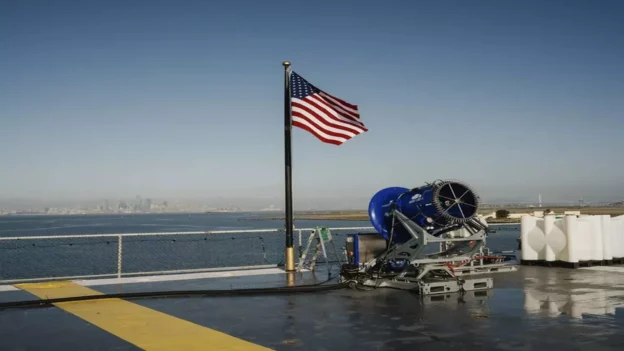Researchers at the University of Washington, under the direction of Robert Wood and Sarah Doherty, have conducted innovative tests in San Francisco that seek to evaluate the feasibility of increasing the albedo, or reflective capacity, of marine clouds.
The team of scientists is experiencing the process of cloud whitening intended to combat climate change through “planet cooling” because its focus is on increasing the Earth’s ability to reflect solar radiation back into space, using sea salt aerosols to potentially lower global temperatures.
Cloud whitening to cool the planet
The process known as cloud whitening is a geoengineering method that seeks to increase the reflection of sunlight using stratus clouds, which are low and dense. The technique involves dispersing aerosols with sea salt particles into the atmosphere. These act as condensation nuclei for water droplets, making clouds brighter and, therefore, reflecting more sunlight back into space.
As climate change advances with increases in carbon emissions and record global temperatures, the scientific community is considering radical alternatives to mitigate it, with the understanding that, although they should be options of last resort, it is crucial to understand their operation and potential. .
Doherty explained to the New York Times that these techniques are seen as a plan B and not primary solutions to global warming. The main strategy remains to reduce the use of fossil fuels, a point on which researchers and environmental activists agree. “With each year setting new records for climate change and extreme temperatures, we are driven to look for more alternatives, even those we previously considered extreme“Robert Wood added.
Climate modification, however, is not without controversy. Organizations such as Greenpeace and Friends of the Earth have raised concerns about the potential side effects of these interventions on climate patterns and ecosystems. “This is a future that we should try to avoid at all costs“David Santillo of Greenpeace told the Times.
The exploration of techniques such as marine cloud bleaching highlights the importance of carefully evaluating geoengineering solutions for both their effectiveness and their potential impacts on global ecosystems. Learning from natural processes and adapting them responsibly can offer valuable lessons to address future environmental challenges.
Follow us on social networks and don’t miss any of our publications!
Inspenet.com YouTube LinkedIn Facebook Instagram X
Source and photo: infobae.com

